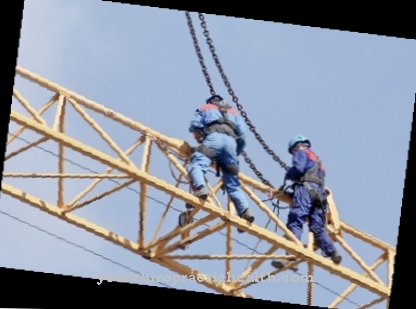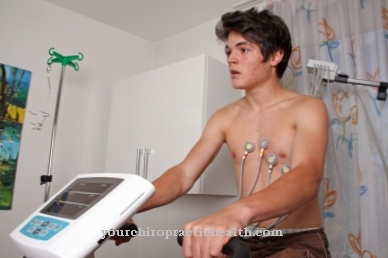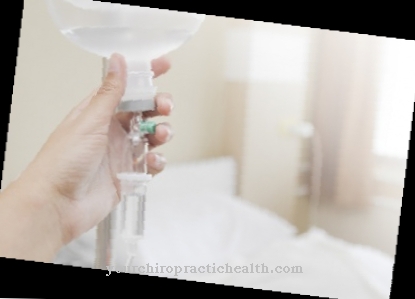The Stangerbad is a physiotherapeutic treatment method that is combined with electrotherapy. The patient to be treated lies in a special tub that is filled with water. Current impulses are conducted through the water through metal plates at the end of the tub and on the sides. This therapy supports the healing or relief of chronic and acute illnesses.
What is the Stangerbad?
The Stangerbad is a form of electrotherapy. This form of treatment is carried out in a special tub. The sides of the tub are provided with galvanized metal plates. These can be freely selected whether they work as a plus or minus pole.
In the form of therapy, not only the electrical stimuli play an important role, but also the heat effect. With the help of a control panel, the treating therapist can regulate the distribution of the poles and the current strength. During the Stangerbath, the patient lies in the tub provided for this purpose and is treated with electrical pulses that can be tailored to his or her symptoms. The current impulses emitted are clearly exerted during the treatment, but depend on the patient's feeling. It should be noted that the patient does not feel any pain with stronger current impulses, but an impulse that is too weak should also be avoided. The therapy of the Stangerbad is often combined with an underwater pressure jet massage.
Function, effect & goals
The Stangerbad is a very effective application in the field of physiotherapy. Current impulses should be applied to the muscles and nerves as a targeted stimulus in order to support the healing of chronic or acute diseases.
The current impulses are conducted through the water via metal plates. The plates function as positive pole (anode) and negative pole (cathode), which plate works as anode or cathode can be set variably by the patient and the treatment goal. The stimulating impulses lead to a so-called warming effect, which is also very important for the success of the treatment. This increases the blood flow. There is a local increase in blood flow of up to five times more than normal.
The warm water in the special tub also holistically stimulates blood flow to the surface of the skin. Above all, the increased blood flow promotes the metabolism within the cells, which contributes to renewal and regeneration of the attacked cells. The Stangerbad is often used for the rehabilitation of patients with joint problems. A Stangerbad is particularly helpful for postoperative joint problems. Muscle tissue that is chronically cramped is relaxed again through the enormous increase in performance in combination with electrical stimuli. Chronically cramped muscle tissue often occurs in back pain. As a result, back pain can be relieved or even eliminated with the help of a rod bath. The main property of the Stangerbad is nerve stimulation. The nerves are stimulated by the current impulses.
Due to the flexible alignment of the plus and minus poles, the muscle tone can be increased or decreased. This improves the ability of a muscle to contract, which has a positive effect on the mobility of the joints. The therapy also relieves chronic pain through electrical impulses. The patient should feel a slight tingling sensation on the skin from the current impulses, which should not be perceived as uncomfortable or even painful. Usually currents of 200-600 mA are used in therapy at the Stangerbad.
Salt or other additives can also be added to the water to improve the conductivity of the current in the water. A rod bath can only be carried out under strict regulations. These are written down in the Medical Devices Act, in the Medical Device Operator Ordinance and in the DIN standard. The legislature sets very strict guidelines for therapies with water in combination with electricity in order to avert possible dangers. In addition, the special bathtub and all other devices that are required for a Stangerbad must be provided with the GS mark and a CE mark. It is also specified that the therapy room in which the special tub is located must be equipped with a window.
The Stangerbad is offered as a service by the health insurances for various clinical pictures and complaints. The listing of these clinical pictures is approved for the treatment. Thanks to the individually adjustable possibilities of the Stangerbad, both cramped muscles (hypertonicity) and weak muscles (hypotonicus) can be treated. Furthermore, complaints of the supporting muscles, rheumatic diseases or chronic and painful spinal diseases are indicated. The Stangerbad is absolutely contraindicated if there are cardiovascular diseases that are acute or chronic. In addition, this therapy should not be carried out if there is a flu-like infection with fever.
You can find your medication here
➔ Medicines for painRisks, side effects & dangers
Most of the side effects, risks and dangers in electrotherapy arise from incorrect application and a lack of specialist knowledge. An incorrect dosage of the amperage can, for example, lead to skin damage, sensory disorders, circulatory disorders and cardiac arrhythmias.
In addition, any form of electrotherapy should not be performed if there are diseases such as inflammation, thrombosis, cardiac arrhythmias, arteriosclerosis or other diseases in the area of blood circulation. Even if there are metals in the patient's body, such as a joint prosthesis or a pacemaker, the Stangerbad is contraindicated.
Furthermore, a Stangerbad must not be carried out if there is malignant tumor disease, an increased tendency to bleed (haemophilia) or other diseases with feverish disease progression. For patients who are afraid of electricity, an alternative therapy to electrotherapy should be used. In general, hydrostatic pressure, electrical current and heat are risk factors at the Stangerbad.



























